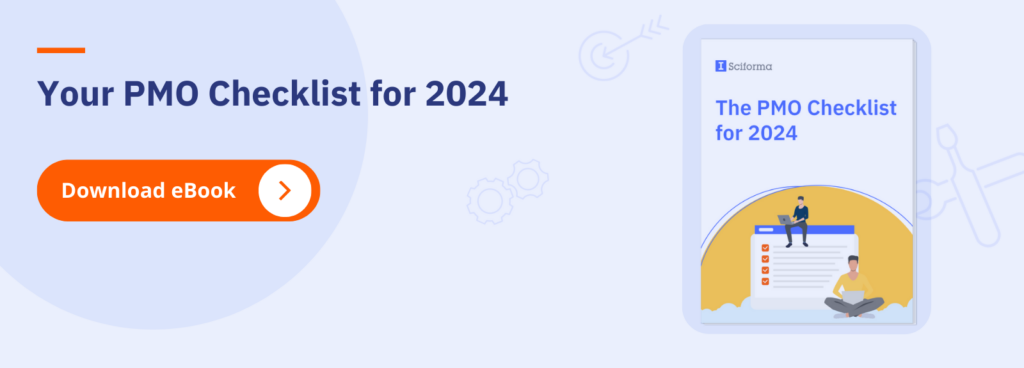- Home
- Blog Center
- PMO Best Practices: What-If Scenario-Based Modeling Tools
PMO Best Practices: What-If Scenario-Based Modeling Tools

What-if scenario-based modeling involves creating hypothetical situations or scenarios to assess their potential impact on project portfolios. By simulating various scenarios, PMOs can visualize and analyze potential outcomes based on different sets of assumptions and variables. Because it increases the responsiveness and intelligence of project portfolio management, scenario modeling is considered one of many PMO best practices. Let’s see how to leverage what-if scenario-based modeling tools.
What-If Scenario-Based Modeling: A PMO Best Practice
What-if scenario modeling empowers PMOs to make strategic decisions by evaluating the consequences of different choices. It enables organizations to identify potential risks, challenges, and opportunities proactively before they materialize. By altering key factors such as resource allocation, project timelines, or budget constraints, PMOs can gain insights into how changes might affect overall project performance.
Scenario-based modeling also helps manage risk better. Understanding the potential risks associated with different scenarios helps PMOs develop mitigation strategies. By visualizing the impact of uncertainties, decision-makers can implement measures to address challenges and ensure project success.
Scenario modeling will also assist PMOs in optimizing resource allocation. The ability to explore various scenarios empowers them to identify the most efficient use of resources. Accordingly, they can ensure that projects are adequately staffed and equipped to meet their objectives.
Finally, what-if scenario modeling tools facilitate communication within the PMO and with stakeholders. Visual representations of scenarios make it easier to convey complex information, fostering transparency and collaboration across teams.
Best Practices to Select the Right Scenario Modeling Tool for Your PMO
Although standalone what-if scenario-based modeling tools exist, most PMOs elect to activate the modeling capabilities of their PPM platform. This is to avoid the proliferation of disconnected tools in the organization. Most of the project portfolio management software out there comes equipped with scenario-based modeling functionality. But they’re not equally valuable to PMOs.
First of all, the selected tool should offer robust analytics capabilities. It should provide detailed insights into the potential outcomes of scenarios but also offer advanced analytics to support data-driven decisions.
When choosing a what-if scenario-based modeling tool, a PMO best practice is to look for flexibility and customization capabilities. The tool should adapt to the unique needs of your PMO, allowing you to define and modify variables, assumptions, and scenarios based on the specific requirements of your projects.
Importantly, consider the scalability of the tools you’re assessing. As the complexity and scale of projects evolve, the tool should be able to accommodate larger datasets without compromising performance.
You should also look for collaboration features that facilitate communication and information sharing among PMO members. The tool should enable collaborative scenario planning, allowing teams to collectively explore, analyze, and discuss various what-if situations.
Finally, just like with any software, ease of use is paramount. A user-friendly interface ensures that PMO team members, regardless of their technical expertise, can effectively navigate and utilize the tool.
Optimizing Your What-if Scenario-Based Modeling Tool
Introducing and optimizing a PMO tool — regardless of its quality – invariably requires some change management effort.
First, you should define standardized processes for utilizing the scenario modeling tool across the PMO. Establish guidelines for creating, analyzing, and interpreting scenarios to maintain consistency and reliability in decision-making.
To maximize the benefits of your tool, invest in continuous training for employees. Ensure that team members are well-versed in using the tool’s features and interpreting the results of scenario analyses.
It is also recommended to regularly monitor the performance of your platform, evaluating its effectiveness in supporting strategic decision-making. This involves soliciting feedback from PMO members using the scenario modeling tool. Their insights can reveal potential areas for improvement or additional features that could enhance the tool’s functionality and usability.
Moving forward, keep the scenario modeling tool up to date with the latest software versions and updates. Regular maintenance will ensure that the tool remains efficient, secure, and aligned with evolving PMO needs.
To learn more about PMO best practices, download the PMO Checklist for 2024!






